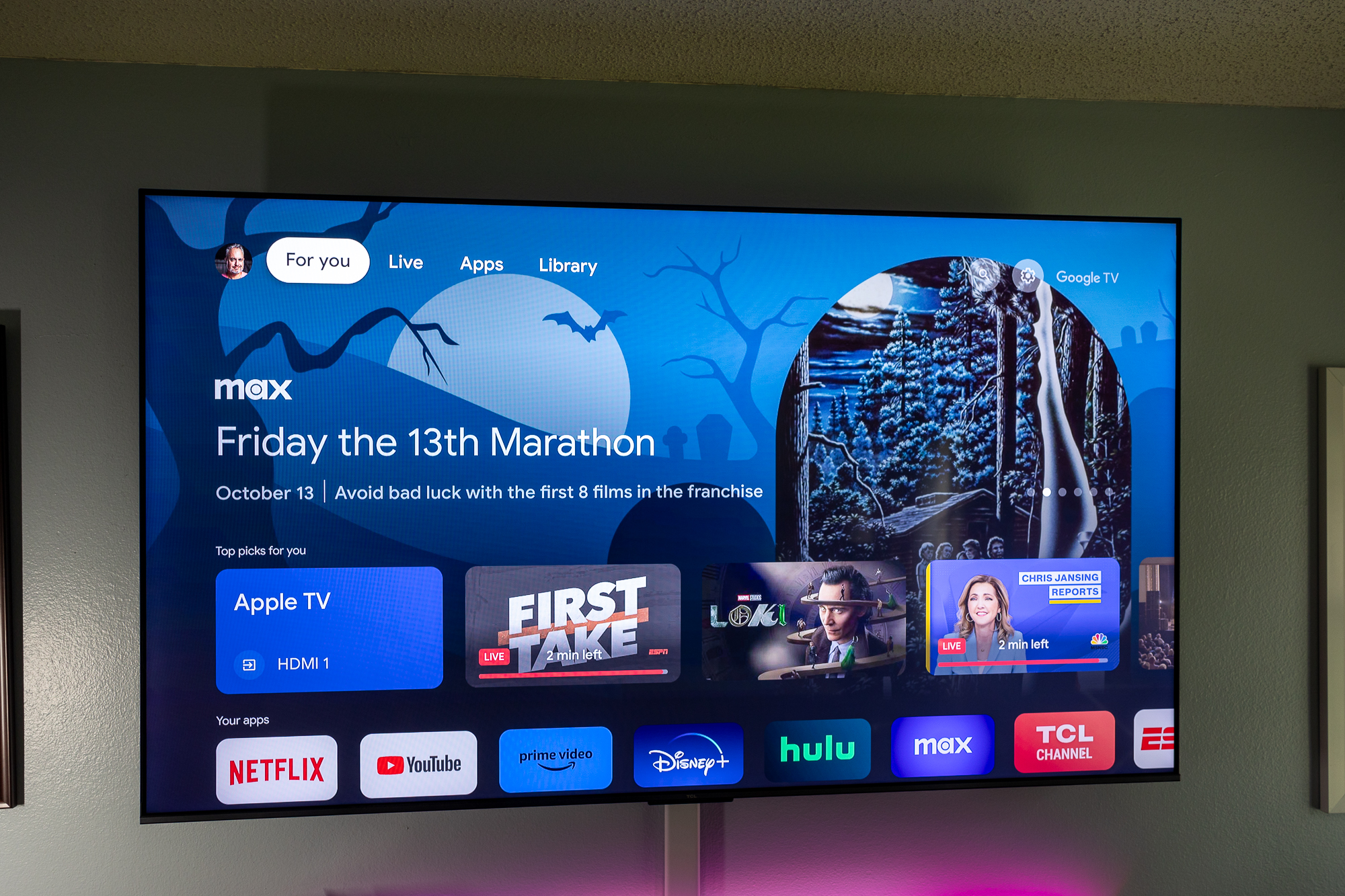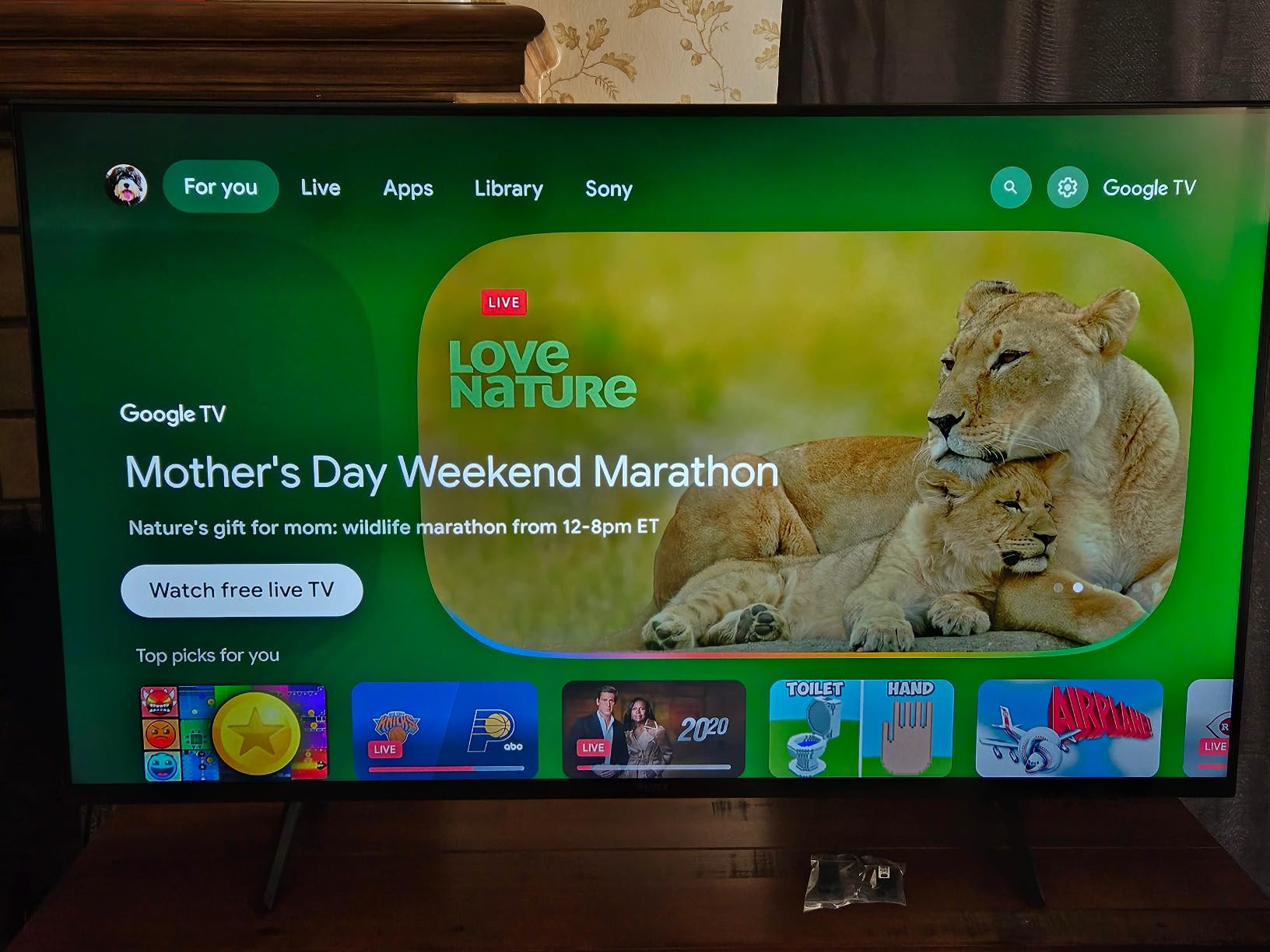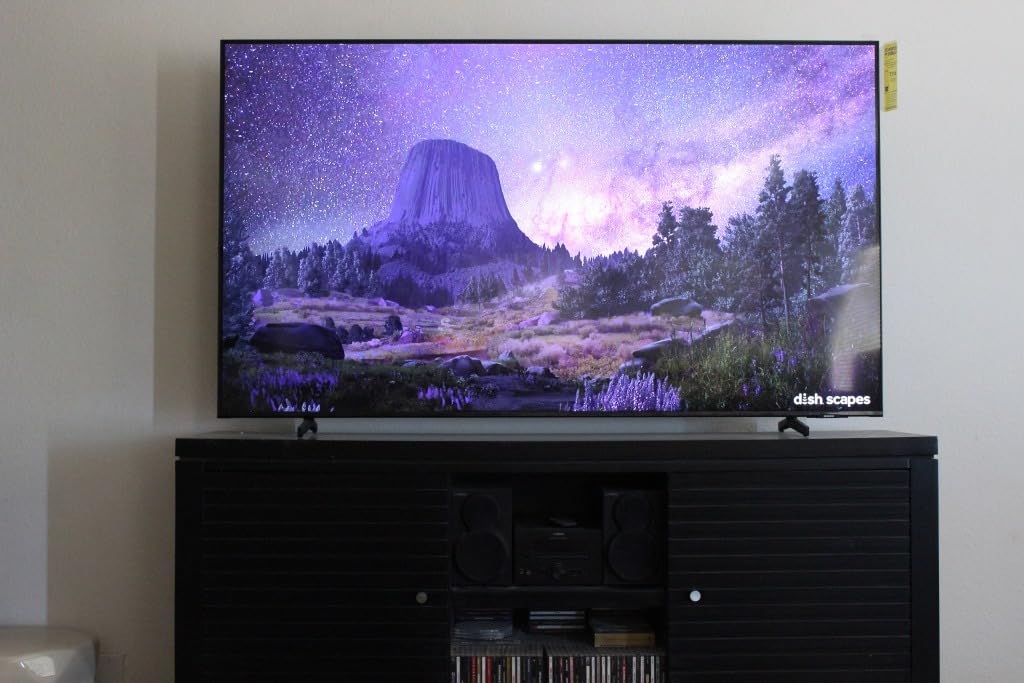Experienced gamers know that a high refresh right is one of the most important things in competitive gaming. Of course, the resolution and size also mean a lot but still, the refresh rate is something that defines how smooth the gameplay is which my experience shows.
Consequently, the higher the refresh rate, the more chances you have to win.
 Hisense 100 Class QD7 ★★★★☆ (4.5/5)
Hisense 100 Class QD7 ★★★★☆ (4.5/5)
This is the best 240Hz TV, as its 100-inch display is powered by Quantum Dot technology, which allows it to support over a billion rich colors and an impressive 4K resolution.
In the coming years, more models are likely to have 4K 240Hz refresh rates. The technology developments will allow companies to release such TVs in smaller sizes.
At the moment, TVs with a high refresh rate are marketed for niche markets. However, as more and more gamers opt for large screens and start looking for the best 4K TV with 240Hz refresh rate, the popularity of such models is predicted to skyrocket.
Brands releasing 4K TVs with 240Hz refresh rates in 2024 are fully aware of the appeal of such screens for gamers and those who prefer to watch videos in the highest quality. Such TVs stand out for their smooth and rich visuals, making them well-suited for fast-paced games. They deliver top-notch performance when used with powerful processors.
Samsung: At CES 2024, Samsung presented its Neo QLED 8K and 4K TVs, which stand out for their high refresh rates of up to 240Hz at 4K resolution. They are perfect for professional gamers and support a Variable Refresh Rate (VRR) and AI-based upscaling. Each of them can be considered the best TV with 240HZ due to their powerful image processing capabilities. These high-end models were designed specifically for gamers who want to enjoy seamless gameplay with low latency.
LG: In 2025, the company released OLED and QNED models that support top-level motion clarity and have impressive color reproduction capabilities. They are perfectly compatible with most gaming setups and support HDMI 2.1, which allows them to support a high frame rate. This brand releases TVs powered by NVIDIA G-SYNC and AMD FreeSync, making them the top choice among gamers who are interested in 240Hz refresh rates without any signs of screen tearing.
Sony: Sony promotes its BRAVIA XR TVs, emphasizing the pairing of 4K 240Hz with proprietary processing for unparalleled motion handling. The TVs are marketed as ideal for gamers, especially those using next-gen consoles and PCs, as well as for sports enthusiasts who value clarity during fast action sequences.
TCL and Hisense: Even though these brands are considered competitors, their 4K 240Hz TV models are quite similar. These models cater to the needs of budget-conscious users, who are looking for TVs suitable for entertainment purposes. However, while TCL focuses on reducing input lag and ensuring HDR support, Hisense prioritizes ULED and other edgy technologies, which allows its TVs to produce beautiful visuals.
Both companies release 4K 240Hz TVs for gamers and other people interested in such top-level features as VRR, AI upscaling, and HDMI 2.1. These models are fully compatible with the newest devices.
With AI features

I believe that Hisense 100-inch Class QD7 QLED TV is an excellent choice for those who are looking for a model powered by edgy technologies. What makes it the best 240HZ TV is that it has a large display, making it suitable for playing games, watching sports, and enjoying cinema.
This model stands out for its support of Dolby Vision, HDR10, HDR10+, and HLG technologies. It allows me to watch different types of HDR content. The TV produces beautiful colors and has great contrast. Due to this, I can watch movies, sports, and TV shows in high quality.
Even though this TV has a native 144Hz refresh rate, its Game Buster 240 allows users to switch to a 240Hz variable refresh rate (VRR) to make their gaming experience lag-free.
I also like such features as Auto Low Latency Mode (ALLM) and AMD FreeSync Premium Pro, as they eliminate screen tearing and input lag. All in all, it’s an excellent TV for people like me who are interested in competitive gaming.
Compatible with gaming consoles

The VIZIO MQX-Series 50-inch TV is one of the best solutions for gamers like me who want to find an affordable QLED display. It supports 4K at 120Hz and Full HD at 240Hz, making it a quite impressive TV under $700 that is popular among console and PC gamers who want to find a responsive display with vibrant colors.
I was pleased by the fact that the 240 refresh rate TV supports HDMI 2.1, making it compatible with consoles and gaming PCs. Besides, it supports a variety of wired and wireless connectivity options.
Due to its slim profile and convenient dimensions (43.8" width, 25.5" height), it’s the perfect fit for smaller rooms, making it a great choice for my needs.
Budget 240Hz TV

The TCL Q6 relies on Quantum Dot Technology (QLED) to produce lovely colors with almost complete DCI-P3 coverage. This HDR PRO+ model stands out for its support of Dolby Vision, HDR10+, and HLG formats.
With it, you can enjoy high contrast and an impressive level of detail, making it invaluable for those who like watching movies. It is compatible with modern gaming PCs and consoles like the PS5 and Xbox Series X. Due to its rich set of features, it produces visuals without lag and stutter, which makes it suitable for competitive gaming.
The High Brightness+ Direct LED Backlight allows a viewer to enjoy better clarity when watching videos in brightly lit rooms. The AIPQ PRO processor improves colors, contrast, and clarity in every scene, making it the perfect TV for conference rooms.
With 4K HDR experience

Sony’s TRILUMINOS Pro technology helped this company create a powerful TV that produces realistic visuals with over a billion colors. This model is perfect for those who enjoy watching movies and playing games in high quality.
The HDR TV supports 4K HDR, Dolby Vision, and 4K X-Reality PRO technologies, allowing it to support impressive color accuracy, contrast, and a high level of detail. It’s a great choice for those who need to play content with a resolution lower than 4K.
When using it in Auto Genre Picture Mode, you will see that it automatically changes settings depending on the type of content. Nevertheless, due to the fact that it supports a base refresh rate of 60Hz and does not support a variable refresh rate (VRR) higher than 120Hz, it is not the best choice for gamers who are interested in a seamless, high-frame-rate gameplay supported by a 240Hz TV.
Motion tracking technology

I was impressed by this TV for streaming as it deploys 4K upscaling technology to improve the quality of low-resolution visuals. It makes HD content look as if it had a 4K resolution. This option is especially useful for those who often watch old movies or use streaming platforms that do not support 4K natively.
The Motion Xcelerator technology minimizes motion blur making it less noticeable. It makes frame transitions smoother for seamless playback. However, one should understand that this model supports only a 60Hz refresh rate, which makes it hardly suitable for enjoying dynamic gaming or sports content.
Its motion-handling capabilities are sufficient for a person who is interested in casual viewing. However, a gamer who plays fast-paced games would benefit from a 120Hz or 240Hz refresh rate.
If a 240Hz TV is too expensive for you or if you are interested in a model created specifically for gaming or other purposes, you can find models with advanced functionality that deliver a similar performance to high-refresh-rate TVs. They have the following features:
✔️ Motion interpolation: As we mentioned before, there are plenty of models that recreate the effect produced by a 240 Hz refresh rate TV. It allows them to reproduce seamless motion by filling the gaps between frames. Even though it allows them to make films and TV shows smoother, some viewers complain about the “soap opera effect.”
✔️ 120Hz with motion processing: Many 120Hz TVs like Samsung’s Motion Xcelerator or LG’s TruMotion support advanced motion processing. They produce additional frames, making motion seem smoother. It allows them to recreate the effect of a high refresh rate.
✔️ Gaming mode with low latency: Even if a TV doesn’t support a 240Hz refresh rate, it might have a special game mode with a short processing time. It can make gameplay visually smoother, making such models suitable for professional gaming.
✔️ Variable refresh rate (VRR): VRR functions by aligning the refresh rate of the game with the refresh rate of a TV's screen. The TVs that support VRR have barely noticeable motion blur. You won’t notice significant stuttering during gaming, which will allow you to enjoy an improved experience.